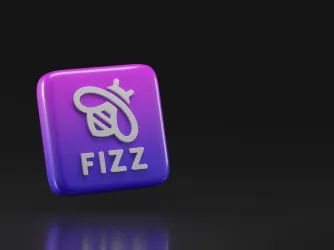Table of Contents
Will Student Press Freedom Survive in Kansas?
From FIRE’s homepage yesterday comes the news that FIRE joined an amicus brief in a newspaper censorship case called Lane v. Simon:
FIRE has joined an amicus brief supporting freedom of the press at Kansas State University. Advisor Ronald Johnson was removed after administrators determined, in part based on its level of “diversity” coverage, that the award-winning paper had “quality” issues. While the move was widely recognized as a punishment of the newspaper, the court went so far as to determine, incomprehensibly, that the “content analysis” of the paper that led to the removal did not represent an attempt by Kansas State, as a public institution, to influence the content of the paper. FIRE and other organizations are working to ensure that this method of punishing students and influencing news coverage does not become a regular feature on America’s public college campuses.
The amicus brief to the Tenth Circuit, which was authored by the Student Press Law Center (SPLC), points out that a “content analysis” certainly does involve judging the content of a newspaper, not just its quality—putting the state in the place of practicing unconstitutional content review of a student newspaper. The brief also points out that the chilling effect on coverage resulting from Johnson’s removal did in fact result in the newspaper’s changing its coverage to conform with what it thought KSU administrators wanted.
In fact, there is more here than meets the eye. As mentioned above, KSU’s Collegian was an award-winning paper. A Google search quickly turned up that the paper had won the Associated Collegiate Press Pacemaker Award at least once as well as two Columbia Scholastic Press Association Gold Crown awards—and this is by no means a thorough list. Why, then, was the paper deemed to be low in quality by administrators?
Here’s an excerpt from the SPLC’s coverage of the case:
Johnson and the Collegian have been embroiled in controversy since February, when the newspaper failed to cover the Big 12 Diversity Leadership Conference, a gathering about 1,000 students to the campus in Manhattan.
The Black Student Union, a student group at the public university, alleged that the newspaper did not adequately cover minority students’ issues and events. Members of the group led protests against the newspaper and Johnson, calling for his resignation because they believed he was not doing enough to promote diversity coverage by the newspaper.
Students also objected to the newspaper’s publication of a headline that they considered racially insensitive and a comment from the call-in line, a system in which anonymous readers call in to voice opinions, that they considered racist.
So, the administration was under pressure from students protesting the lack of “diversity coverage.” What did they do? According to Inside Higher Ed, the supposedly objective “content analysis” compared these factors:
the total bylined items, the number of news stories, the number of feature stories, the percentage of campus stories, the number of sources per story, the number of sports stories, the number of bylined opinion items, and the number of diversity items in six campus newspapers comparable to the Collegian.
Which of these things is not like the other? I count seven wholly objective criteria, along with one that requires you to decide whether a story is “diverse” or not. In light of the fact that the newspaper had won several awards from outside organizations and the protests at KSU itself, does anyone want to guess which part of the “content analysis” was likely the deciding factor? (You get only one guess.)
Unfortunately, the lower court actually fell for KSU’s “quality” excuse for sacking the newspaper’s advisor—even after “quality” was apparently redefined to mean “the paper covers the issues we want it to cover.” After all, what is the appropriate level of “diversity” coverage for a newspaper? One “diverse” story a day? Two a day? One a week? Presumably there is some level that KSU would have felt was appropriate, but for a state government institution to decide what kind of coverage a student newspaper should have is, frankly, creepy. FIRE hopes that the Tenth Circuit will understand this and determine that interfering with newspaper content decisions—no matter how surreptitiously—is no business for any government agency.
Recent Articles
Get the latest free speech news and analysis from FIRE.

FIRE's 2025 impact in court, on campus, and in our culture

The trouble with banning Fizz

VICTORY: Court vindicates professor investigated for parodying university’s ‘land acknowledgment’ on syllabus
